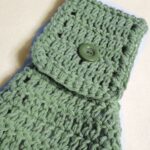According to the Center for Disease Control, in 2005 there were more than 4 million live births. Of those births, more than one million, or greater than 30 percent, were by cesarean section. Accordingly, pregnant women should be educated about the possibility of a cesarean section, what a c-section birth entails, and what her options for delivery by c-section may be prior to giving birth. These options include what type of closure will be used for closing the outer skin layer.
Two of the more frequently used options for skin closure following a cesarean delivery include staples or sutures (stitches). Another method of closure is tape. However, tape is used less frequently than either staples or sutures.
Few studies have been done regarding whether staples or sutures are preferable or affect the outcome of a cesarean section surgery. One study by Alderdice, McKenna, and Dornan suggests that there is no conclusive evidence about the best way to close the skin after a cesarean section.
Your doctor may prefer staples because they are faster than using sutures. However, in my experience, staples have their disadvantages. First, while recovering in the hospital, I found that staples were uncomfortable and felt like they were pinching my skin. In addition, staples must be removed a few days after surgery. The removal of the staples, while less painful than some of the other discomforts of a c-section, was uncomfortable and time consuming. Depending on the number of staples you have (I had about 25), the removal process can be fairly cumbersome. Steri-strips may also be applied to the wound after the staples are removed.
I was also dissatisfied with the appearance of the wound area and the scar. The edges of the scar were raised, and the scar was uneven. Consequently, the scar was not only aesthetically unappealing, the feel of the entire area was somewhat disturbing.
Having had both types of skin closures, staples and stitches, I have a preference for sutures. The doctor who performed my second surgery made a crescent-shaped cut above and below my old scar, effectively cutting the old scar out. She then used a double layer of dissolving sutures to close the outer layer of skin.
I found that my recovery after the second surgery was much easier and much faster. I felt much less pain and discomfort in the early days following the surgery, and I did not have to undergo the trauma of having any staples removed.
In addition, the visual appearance of my new scar, even in the early days following my surgery, was much more appealing than my old scar. The edges of the skin are evenly matched, and there is no raised ridge of skin. I have just a thin red line that marks the area where the wound was.
While talking about cesarean section wounds or scars may seem inappropriate to some women, this topic affects more than a million women every year. Given the statistics, one out of every three women giving birth can anticipate that she will be having a c-section regardless of her anticipated birth plan. Every woman anticipating a birth should be advised and knowledgeable about her options for a cesarean surgery prior to going into labor as a matter of course, regardless of whether she is planning a vaginal birth or a cesarean delivery. If our obstetricians are not advising women of these options, then we as women must take control and learn about these options ourselves.
Sources:
Center for Disease Control, “National Vital Statistics Reports,” Vol. 56, No. 6, December 5, 2007.
Cochrane Database of Systematic Reviews 2003, Issue 2, “Techniques and Materials for Skin Closure in Caesarean Section,” Alderdice F, McKenna D, Dornan J.



